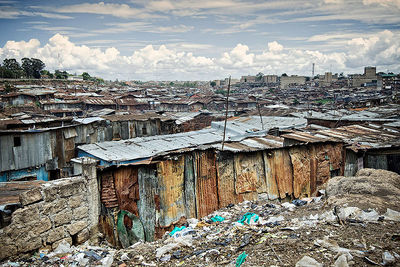imported>Chunbum Park |
imported>John Stephenson |
| (177 intermediate revisions by 8 users not shown) |
| Line 1: |
Line 1: |
| == '''Arab Spring''' ==
| | {{:{{FeaturedArticleTitle}}}} |
| ''by [[User:Nick Gardner|Nick Gardner]]''
| | <small> |
| ----The term '''[[Arab Spring]]''' (also known as the "Arab Awakening") refers to the sequence of protest movements that started in Tunisia in December 2010. The protests there, and subsequently in other Arab countries, were intended to put an end to government oppression, corruption and incompetence. They have led to the overthrow of existing regimes in Egypt and in Libya as well as in Tunisia, and to the initiation in those countries of transitional plans that include the election of representative assemblies and the adoption of new constitutions. Major protest movements in Syria and in Yemen have so far been frustrated by governmental violence, and protest movements elsewhere in the Arab world have achieved little more than promises of minor reforms.
| | ==Footnotes== |
| | | {{reflist|2}} |
| ===Background: the Arab condition===
| | </small> |
| The political structures of nearly all of the countries involved in the Arab uprisings have been categorised as authoritarian (with Syria, Libya and Saudi Arabia ranking among the 15 least democratic countries), and the governments of five of them have been categorised as exceptionally corrupt (Morocco, Egypt, Algeria, Libya and Yemen appear among the upper half in the ranking of Transparency International's Corruption Perception Index). Their populations are predominately ethnically Arab with small native Berber minorities. They include two mixed oil economies (Algeria and Libya); three oil economies (Bahrain, Oman and Saudi Arabia); six diversified economies (Egypt, Jordan, Lebanon, Morocco, Syria and Tunisia); and one primary export economy (Yemen). The oil-producing countries of Oman, Bahrain, Saudi Arabia and Libya are among the world's more prosperous countries, but the prosperity of each of the others is below, or well below the world average in terms of GDP per head, with Syria ranking 153rd out of a total of 228. At least 19% of the Arab population lived below the poverty line at the end of the 1990s (according to an estimate based upon data from Egypt, Jordan, Morocco, Tunisia and Yemen.
| |
| | |
| ===The development of national protest movements=== | |
| Protesters in Tunisia and in Egypt succeeded within a few months in ousting their governments, and regime change was achieved in Libya after eight months of civil war. The governments of Morocco, Algeria, Jordan and Oman responded to more limited protests with promises of political and constitutional reform. In Saudi Arabia the administration sought to avoid confrontation by a programme of infrastructure investment, and its forces were used to suppress dissent in Bahrain. Political instability in Lebanon inhibited governmental response to demonstrations for constitutional change. In Yemen and in Syria, continuing protests were frustrated by violent military opposition.
| |
| | |
| The processes of creating democratically-elected governments now dominate the situations in Tunisia and Libya, and in Egypt they are being accompanied by sporadic demonstrations against the behaviour of its transitional military government. The transitional process in Libya may be hampered by the need to disarm its local militias. The undeterred vigour of the protest movements in Syria and Yemen suggests a continuing prospect of democratic transition. Elswhere in the Arab Spring countries, the prospects appear to be limited to partial relaxations of authoritarian governance.
| |
| | |
| ''[[Arab Spring|.... (read more)]]''
| |
Latest revision as of 10:19, 11 September 2020

The Mathare Valley slum near Nairobi, Kenya, in 2009.
Poverty is deprivation based on lack of material resources. The concept is value-based and political. Hence its definition, causes and remedies (and the possibility of remedies) are highly contentious.[1] The word poverty may also be used figuratively to indicate a lack, instead of material goods or money, of any kind of quality, as in a poverty of imagination.
Definitions
Primary and secondary poverty
The use of the terms primary and secondary poverty dates back to Seebohm Rowntree, who conducted the second British survey to calculate the extent of poverty. This was carried out in York and was published in 1899. He defined primary poverty as having insufficient income to “obtain the minimum necessaries for the maintenance of merely physical efficiency”. In secondary poverty, the income “would be sufficient for the maintenance of merely physical efficiency were it not that some portion of it is absorbed by some other expenditure.” Even with these rigorous criteria he found that 9.9% of the population was in primary poverty and a further 17.9% in secondary.[2]
Absolute and comparative poverty
More recent definitions tend to use the terms absolute and comparative poverty. Absolute is in line with Rowntree's primary poverty, but comparative poverty is usually expressed in terms of ability to play a part in the society in which a person lives. Comparative poverty will thus vary from one country to another.[3] The difficulty of definition is illustrated by the fact that a recession can actually reduce "poverty".
Causes of poverty
The causes of poverty most often considered are:
- Character defects
- An established “culture of poverty”, with low expectations handed down from one generation to another
- Unemployment
- Irregular employment, and/or low pay
- Position in the life cycle (see below) and household size
- Disability
- Structural inequality, both within countries and between countries. (R H Tawney: “What thoughtful rich people call the problem of poverty, thoughtful poor people call with equal justice a problem of riches”)[4]
As noted above, most of these, or the extent to which they can be, or should be changed, are matters of heated controversy.
- ↑ Alcock, P. Understanding poverty. Macmillan. 1997. ch 1.
- ↑ Harris, B. The origins of the British welfare state. Palgrave Macmillan. 2004. Also, Oxford Dictionary of National Biography.
- ↑ Alcock, Pt II
- ↑ Alcock, Preface to 1st edition and pt III.
